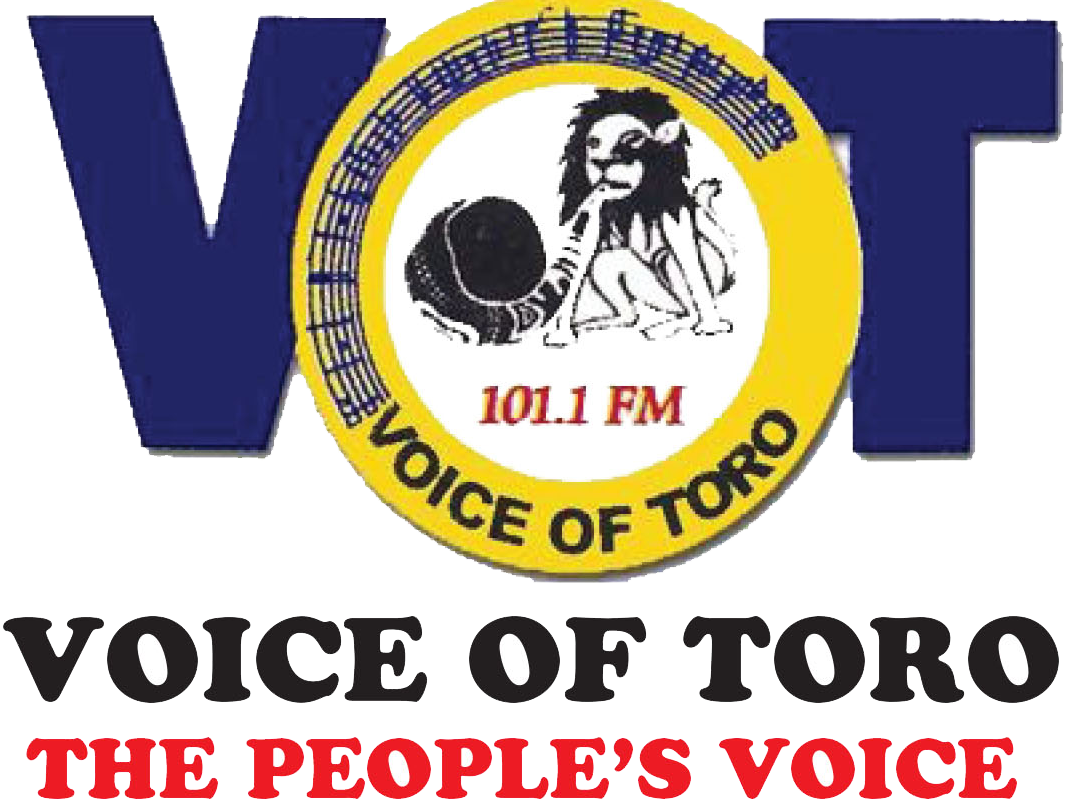Kabarole resorts to irrigation to cub climate change effects
By Musa Polite
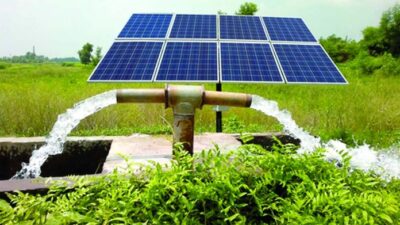 As seasons change and production becomes unpredictable in most districts of Rwenzori region, many district are trying to find ways how to cope up.
As seasons change and production becomes unpredictable in most districts of Rwenzori region, many district are trying to find ways how to cope up.
Crops are dying up even when planting is done in the days previously known for rains. The rains come at a time when farmers expect sunshine and vice versa. Even when the rain comes, it doesn’t last all season long.
This and other challenges are an indication that climate has changed and weather patterns are no longer predictable like they used to be five to ten years back which is challenging farmers as this has led to major losses for those that have extensively invested in agriculture due to persistent drought. A substantial part of the population can no longer access food and as a results widespread acute malnutrition, disease and sometimes death across the affected areas.
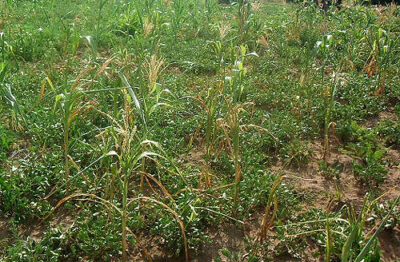
A drought affected garden in Nyabuswa, Mugusu sub county Kabarole district
Rwenzori region, Kabarole district in particular is currently experiencing widespread food shortages and near-famine, with research conducted by Kabarole research and resource center in the districts of Rwenzori region between 2021 to 2022 showings over 40 percent of children under 5 years suffering from severe acute malnutrition in the Rwenzori region, Deprived of essential vitamins and minerals required for their proper growth, they are prone to disease and severe developmental delays.
Many people have cut down Plants and trees that capture and release water into the atmosphere, meaning the more trees are cut down, the convectional rainfall is no longer received as would be, causing drought in the long run.
Practicing agriculture on river banks on river Mpanga, Mugunu and their tributaries leave rivers drying up slowly. Silting and dumping in those rivers, stone quarrying, establishment of settlement areas and washing bays all have slowly dried up the rivers which were major sources of water and helping Kabarole district get rains.
The above said and more other factors have led to drought, changing weather patterns hence forcing people into irrigation to sustain agricultural production because they no longer get frequent rains to do any farming because their places are dry.
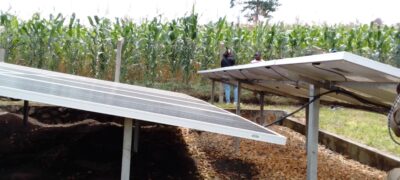
Matovu Kiiza Ronald, senior engineer in the ministry of water and environment says since 2017 government has already invested over 100 Billion shillings into about 57 irrigation projects in the Rwenzori region to supplement on the mega Mubuku irrigation scheme with the aim of continuous production since Uganda is largely dependent on agriculture.
”Government will invest in both micro, medium and large scale irrigation Systems as public investments to mitigate challenges related to water shortages mainly as a result of prolonged droughts, and provide much needed relief to farmers because Well managed irrigation can mitigate effects of climate change and increase yields by 2-5 times for most crops.” Matove noted
According to him, Kabarole district now has three irrigation schemes and many other demonstration sites and it has seen a notable improvement in production mostly horticulture, dairy among other enterprises.
Matovu explaining on irrigation projects
Why irrigation and what types are in Kabarole
Dr. Salvatore Abigaba, the Kabarole district production officer says communities especially in the tropical Africa have been relying on rain to practice rain fed agriculture but as of today, crops that were harvested in the rain season get exhausted and there is no longer enough food because of prolonged droughts that affect crop growing.
Despite some areas having lakes 100 meters away, crops are drying up yet the empires that have developed like the Mesopotamia took advantage of Tigris River, utilized them well to grow crops. The Nile has also been used to grow crops and improve production in Egypt, however despite a number of irrigation schemes being established like Mubuku irrigation scheme, Doha irrigation scheme since 1960’s people didn’t adopt irrigation in Uganda until of recent when severe need arose.
Role of government
The national irrigation policy 2017 mandates government to support individual progressive farmers and organized farmer groups with feasible irrigated agriculture enterprises with purpose to ensure their progression into model farmers and reference to other farmers. This is consistent with the need for transformation of the 68% subsistence farmers that Government has been concerned about, to improving farm productivity and contributing immensely to household incomes as a driver towards attainment of a middle income status.
The government of Uganda through world bank funded Uganda intergovernmental Fiscal Transfer Program (UGIFT) support micro irrigation where the government co fund with farmers according to their size of land to have solar powered, diesel and petrol engine powered irrigation, piped irrigation, sprinklers, drip irrigation systems to help a number of farmers do irrigation to sustain production throughout the year.
Relatedly, agriculture cluster development project (ACDP) the government fund farmers on identified projects like coffee farming, tea farmers to establish demonstration sites that help them irrigate their crops and they help other people to learn from them and according to Dr. Abigaba, this has proved effective in Kabarole as many farmers have learnt the knowledge and applied it.
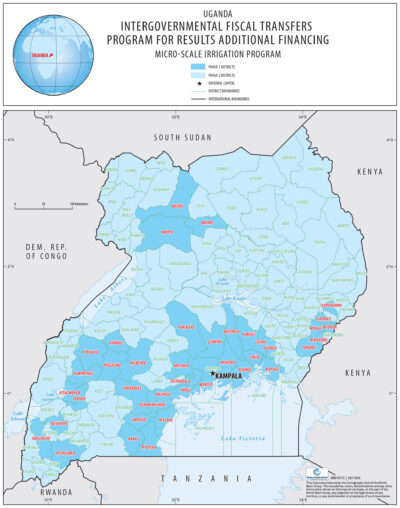 A Map of Uganda showing districts that benefit from the UGIFT program
A Map of Uganda showing districts that benefit from the UGIFT program
According to Dr. Abigaba, the Rwengaju middle scale irrigation scheme in Rwengaju sub county, Kicuna irrigation scheme, Masongola irrigation scheme in Kabende sub county, demonstration sites like Kimuhonde in Kiko town council, those in Hakibale, Busoro, Kaswa and Nyabuswa among others have helped the district to cope up with changing weather patterns as production has been throughout the year.
Abigaba adds that some individual farmers have gone ahead to do irrigation on their own where by they bring their own spoecialists and engineers, they set up their own irrigation equipment to help production through out the year. he acknowledges this is expensive but it has been done by four or five farmers as of now and they are producing.
“By the way, production in the district specificlly those areas that can access water for production and some few wealthy farmers who managed to do irrigation on their own has generally improved.” Dr. Abigaba noted
A gardens in Masongola Kabende Sub County being irrigated by water powered by solar from one of the local rivers
When to irrigate
According to Dr. Abigaba, the Kabarole district production officer, farmers use moisture meters, instruments used to measure the amount of moisture in the soil, put the moisture meter in the soil at about two to three (2-3) fit, read indicators for guidance. When the moisture is lacking, the moisture meter reads red and when the moisture is enough, it reads green. This guides farmers when to apply water.
This garden tool that is gently inserted with the probe end into the soil so that it is buried four-fifths of the way deep gives results of moisture levels after 60 seconds in the display window takes the guesswork out of watering for happier plants.
When there is a need for water in the soil, taps are opened at different points to let water into the sprinklers or the drips that are well places into the gardens, when the farmers deem it fit that the water provided is enough, the water taps are closed.
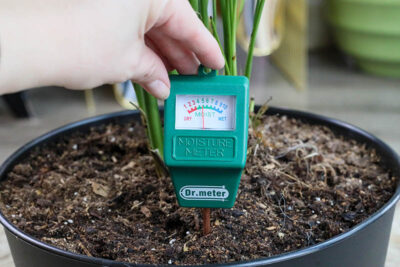 A moisture meter inserted into the soil awaiting for reading
A moisture meter inserted into the soil awaiting for reading
Has irrigation really helped?
‘’Irrigation has really helped farmers to beat the two season model where they would wait for the only two seasons annually to produce. They now produce throughout the year. This helps them get much profits in dry season when production is low and the demand is high.” Karungi Bridge, a business woman selling onions in Fort Portal city who gets her onions from those using irrigation in Rwengaju was quoted saying.
According to her, there is no single day she ever lacked onions because farmers in Kicuna and Rwengaju produce year in year out. Even in the dry season because they are on the irrigation grid of Rwengaju water for production.
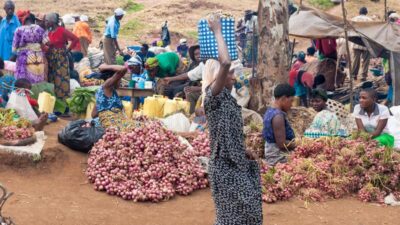 Bridget’s onion business at Kabundaire market in Fort Portal city.
Bridget’s onion business at Kabundaire market in Fort Portal city.
Turyamubona Lauben Keefa, chairperson Masongola small scale farmers association says the 650 Million Masongola irrigation scheme in Kabende Sub County has really improved production throughout the year.
“The season we started using water from this irrigation scheme we got over eleven (11) million shillings from two hectares as opposed to between three to four million previously” Keefa observed.
Agaba Abdullah, LC3 chairperson of Rwengaju Sub County says since establishment of Rwengaju middle scale irrigation scheme, over four hundred (400) households that are on the grid have steadily increased production to atleast 50 percent.
according to Agaba, Rwengaju is known as a model sub county with farmers that are referred to even at a national level like Mr. Nyakaka of the Kana farm who does poultry and dairy helped by the water of the scheme, Rwengaju revolutionary farmers association produce coffee extensively helped by the water for production from the scheme, Eng. David Kumwe produces pineapples throughout the year using the water from the Rwengaju irrigation scheme among others
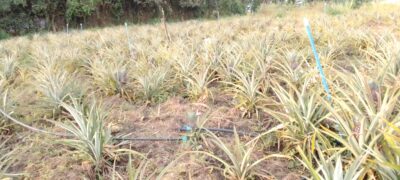
”Generally, production since the initiation of the 27 Billion Rwengaju irrigation project has tripled. Farmers produce even off season crops like vegetables, hibiscus, get water for poultry even Animals are no longer water stressed.” Agaba noted
However George Turanzomwe, chairperson Rwengaju revolutionary farmers association observes a need to extend the water for production to other areas that never benefited from the grid yet have enterprises that need water in the dry season, mostly those doing horticulture.
Supervisor’s view
Festus Bandeba, the Kabarole resident district commissioner, the chief monitor of government programs in the district acknowledges that with the irrigation projects in the district, quality harvests have been realized.
According to Bandeba, other sub counties from Kabarole, Fort Portal city and Kyenjojo district have come to bench mark on some of demonstration sites, an indication that the people are on truck.
On how equipment like generators, solar panels, pipes and others are protected against vandalism to enable continuity of the schemes, the RDC noted that locals themselves do communal policing to guard the infrastructure because they have owned the projects to the extent of soliciting their own funds to pay night watch men to monitor and guard the equipment.
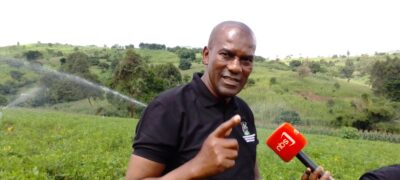
Festus Bandeba, Kabarole Resident District Commissioner
Associated challenges
Agaba Abdala, the Rwengaju sub county chairperson says despite the water being purposely for production, some people use it for domestic use and sometimes drink it which is risky.
”Also during the dry season, pipes burst after being hit by sunshine, cutting off water supply to other areas. This affects mostly those doing fish farming because when the water supply is cut off, fish suffocate.
Agaba Abudala, Rwengaju sub cpounty chaifperson explaining
Bettie Asaba the Rwengaju sub county extension officer says that not all villages are connected to the grid. For example in Rwengaju, only thirteen (13) out of twenty one (21) villages are connected to the grid of Rwengaju irrigation scheme. This forces some people where pipes are only passing to sometimes cut and damage them in protest.
Asaba also says that maintenance of the scheme is expensive, with bureaucracy delays. According to her, maintenance is done by the ministry of water and environment with all the bureaucracy from the farmers to extension officer to the production officer to the ministry engineer some times when there is blockage or damage, it can take even two or three month before repair and in the process, production is affected for people growing like Tomatoes and onions.
Despite the national irrigation policy 2017 stipulating a joint responsibility of ministries in charge of agriculture and water, Asaba says the two ministries aren’t coordinated. Ministry of water set up projects to support agriculture but in most cases, the ministry of agriculture isn’t in the know of these projects” Asaba asserts.
According to the policy, The Ministry in charge of agriculture shall be responsible for on-farm aspects of implementation which refers to development of hydraulic infrastructure, associated engineering works and irrigation accessories comprising of conveyance from farm gates to farmers’ fields and water use management While The Ministry in charge of water shall be responsible for off-farm interventions which refers to development of hydraulic infrastructure and associated engineering works comprising of water abstraction and conveyance to farm gates. Both ministries will jointly provide guidelines to support implementation.
Drought report
According to the national irrigation report 2017, In 2010, alone, drought accounted for 38% and 36% loss in production for beans and maize respectively, in 2014, the country registered Uganda shillings 2.8 trillion (8%) loss of Gross Domestic Product (GDP) and 87% loss to ago-industries (Mwaura et al 2014).
In 2011 alone, the Department of Disaster Management of the Office of the Prime Minister estimated the damage and production losses as a result of climate change at UGX 4.3 Trillion which translates to about 7.5% of GDP.
Irrigated area in Uganda
In 2021, total area equipped for irrigation for Uganda was 11,000 hectares. Total area equipped for irrigation of Uganda increased from 4,000 hectares in 1972 to 11,000 hectares in 2021 growing at an average annual rate of 2.40%.
Irrigated land area worldwide occupies about 16% of the total agricultural area and the crop yield of irrigated land is roughly 40% of the total yield. In other words, irrigated land produces 2.5 times more product than non-irrigated land.
End
